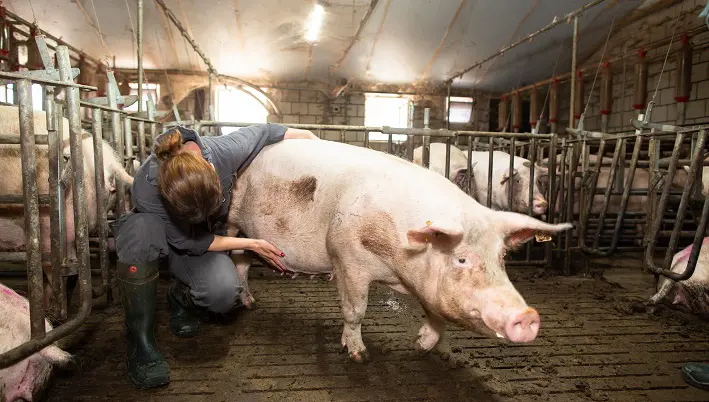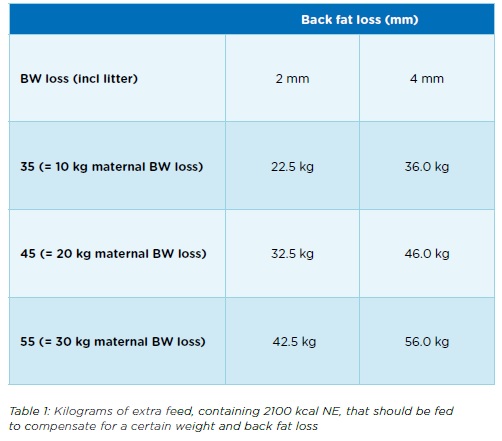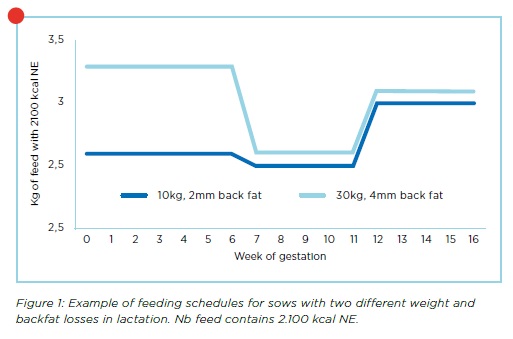How to compensate for higher weight loss in summer to prevent the autumn dip
In summer the temperatures rise. Often positive for us humans but not so much for our livestock. Especially lactating sows suffer from high environmental temperatures. Producing milk increases the internal heat production as does digesting feed to provide nutrients for milk. An increased internal heat production increases the risk for heat stress.

Sows reduce their feed intake to lower internal heat production and to limit heat stress in summer. As the milk production does not decline at the same rate, body reserves are used as a nutrient source for milk. This means that lactation weight loss increases in summer. The increased weight loss has to be compensated after weaning. If not, the farrowing rate and litter size decrease, and litter weight might decrease as well. This is often referred to as the autumn dip. This article describes how to compensate for higher weight loss in summer to prevent the autumn dip.
Measuring weight and back fat loss
First of all, if we want to know if the weight and back fat loss increase during summer, we need to know the average weight and backfat loss on a farm during the year. Absolute weight and backfat development are farm specific and should be measured. If they are measured, our specialists can compare your information with the data in our database of general body condition development of similar farms, to indicate how the farm performs.
Secondly, we also need to know if the increased weight loss in summer is acceptable or not, to see if we need to take action. Our norm for acceptable weight loss from before farrowing to after weaning is 17-20%, including 25 kg litter weight. This equals to 8-12% of maternal weight loss. Backfat loss differs a lot between genetics, however, we consider a backfat level (P3) at weaning between 11-13 mm optimal for most genetics. If the weight and back fat losses are within acceptable limits, effects on reproductive performance should be limited.

What can you do to compensate for weight and back fat loss?
If body condition loss during lactation is too high (e.g. after a warm period) it should be compensated for in early gestation. But how much should we feed to compensate for weight and back fat loss? As mentioned before, compensatory feed allowance in (early) gestation depends on desired weight and backfat gain in gestation. Calculations by Koudijs show that to compensate for 10 kilograms of weight about 20.870 kcal NE is needed. This equals to ±10 kg of feed with 2.100 kcal NE. To compensate for 2 mm of backfat loss about 32.012 kcal NE is needed, equal to 15 kilogram feed with 2.100 kcal NE. However, compensatory growth of weight and backfat cannot be seen independent from each other. The table below shows the amount of extra feed, containing 2.100 kcal NE, that should be fed to compensate for a certain weight or backfat loss. Most of the compensatory growth should take place in the first 35-45 days of gestation. This means that the extra feed allowance should be given in this period.

Contact our swine specialists for advice
Keep in mind that feeding extra feed in early gestation is only alleviating the symptoms of an increased weight loss in lactation. For a more long-term solution, you should look at all aspects affecting feed intake and weight loss in lactation, even in summer.
